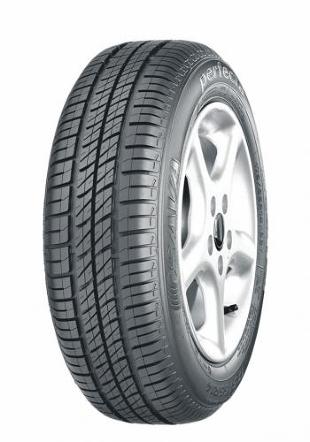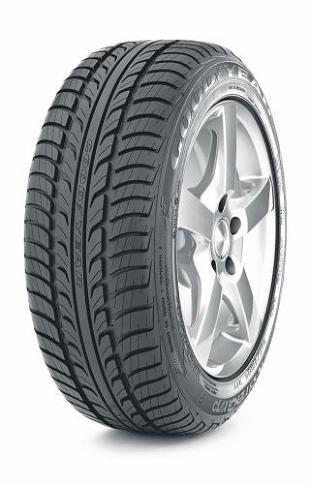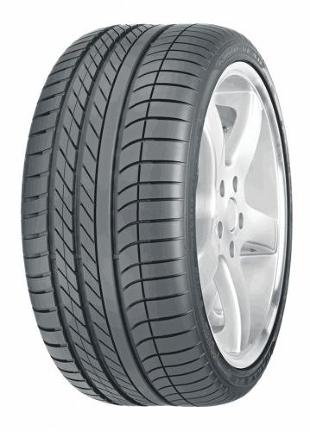
Spring tires
 Tires are like shoes. If someone insists, they can wear the same shoes all year round, but comfort and convenience leave much to be desired.
Tires are like shoes. If someone insists, they can wear the same shoes all year round, but comfort and convenience leave much to be desired.
A similar situation with the tires in the car.
Most tires produced today are designed for a specific season only. Winter tires are adapted to low temperatures. In summer, when the temperature of the asphalt reaches 30 or even 40 degrees C, such a tire wears out very quickly, so it will definitely not be suitable for the next season. 
In addition, the braking distance is increased and the driving quality deteriorates due to a too soft tire. In addition, winter tires make more noise than summer tires.
Winter tires should be changed if the average daily temperature is above 7 degrees C. However, in the case of stiffer low-profile summer tires, it is worth waiting until temperatures around 10 degrees C are changed.
Changing tires should be preceded by a visual inspection of their condition. If the tread depth is less than 2 mm, you should not wear them, since you definitely won’t be able to drive all season. Also, cracks and swelling deprive the tire of the right to further use. Changing tires is also an opportunity to check the balance, even if we move entire wheels.
It depends on the quality of the tire whether it can withstand all the loads.
The contact area of the tire with the road surface is the size of a postcard. This is very little, given the forces at work. Therefore, in order for a tire to provide adequate grip, it must be of high quality.
Even the best transmission and ESP suspension will not prevent a crash if the last link, i.e. tires, is faulty. With limited cash, it's worth ditching aluminum rims in favor of better tires.
There is a large selection of tires on the market and everyone should find tires that match their financial capabilities. It is better to immediately buy a set of the same tires, because then the car will behave correctly on the road. Buying retreaded tires is not the best solution. Their durability is lower than new ones and more difficult to balance.
Proper tire pressure is important. When it is too high, the center tread wears out quickly. When a tire is inflated, it becomes stiff, which reduces driving comfort and affects the wear of suspension components. When the tire pressure is too low, the tire only makes contact with the road on the outer side of the tread, which wears out at an accelerated rate.
In addition, there is an instability of the car when driving straight and a delay in the reaction to steering movements. The increase in fuel consumption is also important - the tire is underinflated by 20%. results in a 20 percent reduction. kilometers traveled with the same amount of fuel.
Prices for tires should be checked in online stores, because they can be cheaper by up to ten percent than in specialized services.
Good to know
Tread depth has a great influence on the speed of water removal and braking distance. Reducing the tread depth from 7 to 3 mm increases the braking distance on wet surfaces to 10 meters.
Speed index determines the maximum speed at which a car can move with these tires. It also informs indirectly about the ability of the tire to transmit the power developed by the car's engine. If the vehicle is fitted with tires with a V index (maximum speed of 240 km/h) from the factory, and the driver drives more slowly and does not develop such high speeds, then cheaper tires with a speed index T (up to 190 km/h) cannot be used. Vehicle power is used when starting off, especially when overtaking, and tire design must take this into account.
Valve , commonly known as a valve, plays an important role in the tightness of the wheel. During movement, centrifugal force acts on it, which contributes to its gradual wear. Therefore, it is worth replacing the valve when changing a tire.
Tire storage
In order for winter tires to survive until the next season in good condition, they must be properly stored. The first step is to thoroughly wash your tires (and rims) to remove salt and debris after the winter season. After drying, they can be stored in a dark, dry and not too warm room, away from grease, oils and fuels. Tires without rims should be stored upright and whole wheels stacked. If we don't have space to store tires, we can store them for a small fee at a tire shop.
How to extend the life of a tire?
– take care of the correct tire pressure
– do not move or brake too hard
– do not enter corners at too high a speed, which causes a partial loss of traction
- do not overload the car
- approach curbs carefully 
– take care of the correct suspension geometry
Types of protectors
Symmetric - the tread is used mainly in cheaper tires and for tires of small diameter and not too  large width. The direction in which such a tire is installed does not make much difference to its correct operation.
large width. The direction in which such a tire is installed does not make much difference to its correct operation.
Directed - a tread commonly used in winter and summer tires. Especially useful on wet surfaces. A characteristic feature is a clear directional tread pattern, and signs embossed on the side contribute to the correct assembly.  tires.
tires.
Asymmetric - The tread is used especially in wide tires, both winter and summer. A feature is a completely different tread pattern on the two halves of the tire. This combination should provide better grip.
What the rules say
– It is forbidden to install tires of different designs, including tread patterns, on the wheels of the same axle.
- It is allowed for short-term use to install a spare wheel on a vehicle with parameters different from the parameters of a normally used support wheel, if such a wheel is included in the standard equipment of the vehicle - under the conditions established by the vehicle manufacturer.
– The vehicle must be equipped with pneumatic tires, the load capacity of which corresponds to the maximum pressure in the wheels and the maximum speed of the vehicle; tire pressure should be in accordance with the manufacturer's recommendations for that tire and vehicle load (these parameters are specified by the manufacturer of this car model and do not apply to the speed or loads that the driver drives)
- Tires with tread wear indicators must not be installed on the vehicle, and for tires without such indicators - with a tread depth of less than 1,6 mm.
– The vehicle must not be equipped with tires with visible cracks that expose or damage the internal structure
– The vehicle must not be equipped with studded tires.
– The wheels must not protrude beyond the contour of the wing
